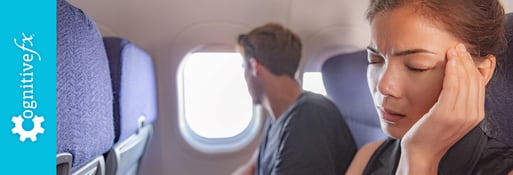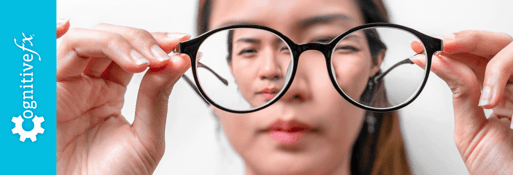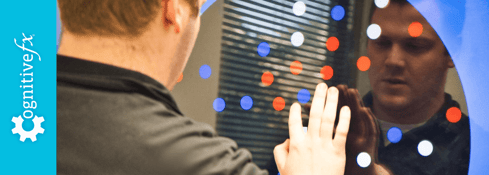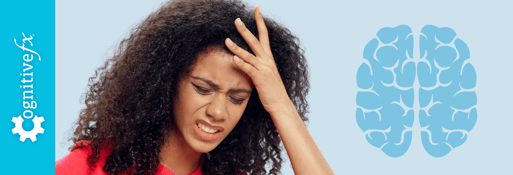“It’s like there’s molasses in my brain.”
"I’ve had a headache every day for the past 2 years. It’s constant.”
“It’s hard for me to go into grocery stores without feeling dizzy.”
“Just having conversations with people is absolutely exhausting. I have a hard time following what they’re saying.”
“I thought I was stupid. I couldn’t remember anything.”
“I was always in ‘the cave,’ trying to stay safe. I felt like life was passing me by.”
We hear these words often from patients whose concussion symptoms didn’t go away.
Living with post concussion syndrome (PCS) is a frustrating experience. Symptoms that are supposed to go away after a couple of weeks of rest in a dark, quiet room don’t. Some people keep waiting and waiting, only to find their concussive symptoms getting worse instead of better. They become unable to leave home — trapped by debilitating headaches, dizziness, or light and sound sensitivity. If they do leave home, they pay the penalty with ferocious symptoms that keep them in bed for days afterwards.
Others manage to keep going to work or to school, and everyone thinks they’re fine because they look fine and they’re technically functioning. However, they might be relying on medication to cope with daily headaches, panic attacks, or anxiety. They feel like they’re always in a fog. Or their social life is non-existent because they just can’t handle being around groups of people anymore. Friends and doctors don’t understand why they’re not better already and accuse them of making excuses.
We also see people who had no idea that their symptoms stemmed from a brain injury. Maybe the injury happened long ago, and no one connected subsequent symptoms back to it. Sometimes they didn’t know they could get a concussion without hitting their head or loss of consciousness and thought there was nothing to worry about. Or they didn’t realize things such as exposure to carbon monoxide or viral and bacterial infections can cause a mild traumatic brain injury (mild TBI or mTBI) with long-term consequences. These people often go years trying to find help for mysterious ailments with no idea what caused them. They are surprised (and often relieved) to find a name to put with their condition.
Not many people understand what it's like to live with post-concussion syndrome. And many doctors don't know about appropriate treatment options. So patients hear things like this from healthcare providers (from family doctors to sports medicine practitioners to even neurologists):
- Come see me again in 6 months. (Repeat.)
- You might feel better in a year. Be patient.
- I don’t know what to tell you. Your scans are normal. We can’t find anything wrong.
- Take these meds and see if they help.
- This is all psychological. You’re just depressed.
- We don’t know why this happens to some people. There is no cure. You’re just going to have to live with it.
So in case you were in doubt: PCS is a real condition. It has a cause. It has a treatment.
We’ll explain what causes post-concussion syndrome, how it’s treated, and what seven patients of various ages, injury types, and backgrounds had to say about living with post-concussion syndrome. If you’re unsure whether you have PCS, perhaps you’ll recognize yourself in some of their stories.
If you want to skip ahead to any part of this post, you can do that by clicking on these topic links:
Have your concussion symptoms lingered for weeks, months, or even years? On average, our patients improve by 75% after treatment at our center specializing in post-concussion therapy. To see if you are eligible for treatment, sign up for a consultation.
Note: Any data relating to brain function mentioned in this post is from our first generation fNCI scans. Gen 1 scans compared activation in various regions of the brain with a control database of healthy brains. Our clinic is now rolling out second-generation fNCI which looks both at the activation of individual brain regions and at the connections between brain regions. Results are interpreted and reported differently for Gen 2 than for Gen 1; reports will not look the same if you come into the clinic for treatment.
What Causes Post Concussion Syndrome?
The brain responds to a mild head injury just like the rest of the body does: with inflammation and bruising around the injured area. Swelling and bruising on your arm isn’t a big deal, but swelling and bruising in the brain is a serious matter. It causes a temporary breakdown of the delicate cells (neurons) in the injured area. And it disrupts the complex system of communication, known as neurovascular coupling (NVC), between the neurons and the blood vessels that supply oxygen to them.
When NVC is working correctly, brain cells call for a precise amount of oxygen to be delivered at a specific time so the brain can do a certain job, such as trying to remember the steps to a dance sequence. When it’s dysfunctional, something goes wrong with that call and delivery system.
Sometimes the communication pathway the brain normally uses is blocked by inflammation. When this happens, the brain tries to use other pathways to get the job done. Unfortunately, these alternate pathways aren’t very efficient. (Think about having to use the stairs to get to the 10th floor of a building because the elevator is out.)
Sometimes the neurons don't call for the right amount of oxygen. Sometimes blood vessels don’t deliver enough oxygen. Sometimes they deliver too much.
Concussion symptoms result from this dysfunction of the neurovascular coupling system. The brain isn’t communicating efficiently. It’s getting tired from overworking or not getting the right amount of energy to do what it needs to do. (Imagine how you’d feel if you had to run up and down those stairs 10 times before lunch.)
After an mTBI, the brain usually returns to its normal NVC function within a few days or a few weeks. For some people, however, the brain continues to use inefficient pathways and their symptoms persist indefinitely. When this condition persists for more than a few months, we call it post concussion syndrome.
If you want to read a more detailed explanation of post concussion syndrome, you can read our Complete Guide to Post Concussion Syndrome.
Living with Post Concussion Syndrome: 7 Patients Tell Their Stories
Patients come to us not just from the United States, but from around the world, to pursue treatment for post concussion syndrome. We see some within a few months of their injury. Others have lived most of their lives suffering from strange symptoms and had given up hope of ever finding help. Some developed PCS after one injury. Others suffered multiple concussions and other types of brain injury. Each has a unique story to tell. The patients we write about below represent just a few of the people we treat every day in our clinic.
To help you understand their stories, here are a few things you need to know about what we do at Cognitive FX:
- Before treatment, each patient goes through a series of preliminary brain scans. We do a standard MRI of the brain and of the cervical spine to be sure there are no undiagnosed conditions that could interfere with treatment or that might need to be looked at by a specialist.
- Every patient completes a functional Neurocognitive Imaging scan (fNCI), a special type of MRI that detects areas of the brain that have been damaged by an mTBI.
- Our Cognitive FX team of doctors and therapists use the results of the fNCI, along with the patient’s medical history, to tailor intense cognitive and physical therapy to their needs (we call it Enhanced Performance in Cognition (EPIC) treatment).
Here’s a quick preview of the patients you’ll read about in this section:
- Anthony’s short-term memory was so impaired after a motor vehicle accident that he couldn’t read, drive, or work for months.
- Olivia was a fit, competitive figure skater whose health mysteriously began a downward spiral during her teenage years.
- Amanda missed most of her eighth grade school year after developing severe migraines and short-term memory loss after a softball injury.
- After a skiing accident at the age of 22, Myrthe spent 13 years suffering from debilitating symptoms that hindered her ability to work and to be the mother she wanted to be to her children.
- Aurora had difficulty managing the details of her daily life after suffering seven head injuries and a stroke.
- Sam lived for 33 years with unexplained symptoms, never realizing they were from a childhood brain injury.
- After injuring her head in a bicycle accident, Quirien couldn’t work. At the advice of her doctors, she sat in a dark room for months, waiting for her symptoms to go away.
We’ll tell you how their injuries affected their lives and how things changed during and after treatment at Cognitive FX.
Primary PCS Symptoms: severe short-term memory problems; extreme fatigue; overwhelm; light sensitivity; depression; mood swings; exercise intolerance.
How His Injury Affected His Life
Anthony was injured in a car accident. He lost consciousness and was in severe pain afterwards. The emergency department couldn’t find evidence of a severe traumatic brain injury (or any other life-threatening injuries), so they sent him home to recover.
He realized something was very wrong when he tried to work from home the next day and was unable to read. His short-term memory was severely impaired. He’d ask his wife a question and immediately forget what she said. That, along with a few other alarming symptoms, sent him back to the emergency room. The doctor there advised him to consult a concussion specialist and to go home and rest in a dark, quiet room.
The father of six children went from a very busy life as a deputy county attorney and volunteer to being unable to work or drive. Normally very easy-going, he became depressed and suffered from extreme mood swings, lashing out at his loved ones even though he didn’t want to. He suffered from light sensitivity and couldn’t tolerate groups of people. He found that he couldn’t even differentiate voices if several people were talking at once. He got lightheaded and dizzy when he tried to exercise.
How He Found Help
In his search for help, Anthony worked with a neurorehabilitation specialist, a cognitive rehabilitation specialist, a neuropsychiatrist, and a chiropractor. He took medication for the mood swings.
He slowly improved enough to work half-days, but his recovery plateaued and he was still experiencing significant problems. He admitted, “I didn’t know if I’d ever be back to me.”
Anthony’s chiropractor recommended Cognitive FX after attending one of my presentations. Since Anthony is from the Provo area — where we’re located — he asked around and heard good things about other patients’ experiences and results. He decided to give it a try. “If this didn’t work, I didn’t know what other options I would have,” he said
Seven months after his accident, Anthony went in for his preliminary functional neurocognitive imaging scan. Anthony’s overall Severity Index Score (SIS — a measurement of overall brain dysfunction that comes from the fNCI scan results) was a 4.27 (normal is 0 with a standard deviation of =/- 0.75), indicating a severely impaired brain.
As most patients do, Anthony struggled during the first two days of treatment. He got light headed during cardio. During a cognitive exercise, he was supposed to think of words that started with the letter “g.” He couldn’t think of any.
Something had happened in his brain that day, however. He woke up Wednesday morning thinking of a steady stream of words that began with “g.” He continued to improve during the week. The dizziness during aerobic exercise went away. He said he could feel things getting better throughout the week. He was remembering things.
Every patient gets a post-treatment fNCI at the end of the week. This time, Anthony’s score was -0.2: squarely in the normal range and possibly the biggest scan improvement we’ve seen.
Co-workers and friends immediately noticed the change.
Two months later, Anthony was cleared to return to full-time work. His mood swings improved. He was able to wean off his medication. He no longer has problems with exercise; he enjoys walking and playing basketball. And he’s able to drive whenever he wants.
After treatment at Cognitive FX, Anthony continued to work with his neuropsychiatrist to continue improving his relationships and learning about healthy self-care.
Primary PCS Symptoms: extreme fatigue; exercise intolerance; headaches; brain fog; difficulty concentrating; light sensitivity; overwhelm in noisy, crowded situations; emotional ups and downs.
Unexplained Health Changes
In her childhood, Olivia was called the “Energizer Bunny” by her family. She dove into competitive figure skating at the age of eight, eventually training on and off the ice five to six days per week for several hours a day.
In her early teens, she started experiencing unexplained fatigue that got increasingly worse as time went on. She got dizzy after the intense cardio required in figure skating. It got so bad that she had to lie down so she wouldn’t pass out immediately after her skating programs. Her blood pressure suddenly dropped after cardio. These episodes were followed by nausea, headaches, and brain fog that affected her for the rest of the day. The headaches got worse when she experienced the jarring falls that go along with attempting triple jumps.
She woke up tired every morning despite what she thought was a good night’s sleep. She enjoyed shopping but found she couldn’t tolerate the bright lights of the stores. Eventually, crowds of people made her inexplicably angry.
Visits to the doctor led to a series of educated guesses:
- It might be a series of colds. She’ll eventually get better. (She didn’t.)
- It could be exercise-induced asthma. Try this inhaler. (It didn’t help.)
- It could be borderline anemia. Take iron supplements and eat more iron-rich foods. (It didn’t help.)
- She has Neurocardiogenic Syncope. Make sure she gets a lot of salt in her food to keep her blood pressure up. (Olivia said, “Neurocardiogenic syncope is just a fancy name for ‘your blood pressure drops suddenly and we don’t know why’.” The salt helped minimally.)
Eventually, the toll on her body was too much, and she quit figure skating at the age of 16 in hopes of regaining her health. She went on to a four-year university, during which she started collecting diagnoses for other conditions: Celiac Disease; hormone dysregulation; endometriosis; food and environmental sensitivities. Treating each of these conditions helped, but they didn’t fully resolve her symptoms — especially the exercise intolerance.
The Missing Piece of the Puzzle: Post Concussion Syndrome
It was the exercise intolerance that eventually led to the missing piece of the puzzle: undiagnosed concussions. Olivia was working as a writer and content strategist for a content marketing agency that assigned her to work with Cognitive FX because of her background in science.
As she interviewed the doctors, staff, and patients for stories, she realized that her symptoms were strangely similar to those of the clinic’s patients. When she learned that concussions can cause exercise intolerance due to autonomic nervous system dysfunction, the lightbulb went off.
Even though she wasn’t sure that previous concussions were behind her symptoms, Olivia decided to fill out a consultation request. Her pre-treatment fNCI at Cognitive FX confirmed that she suffered from post-concussion syndrome.
Even though she thought her vision was fine, the vision specialist they collaborated with found significant vision problems. He helped Olivia locate a therapist near her home to continue the therapy she would need. She admitted she never would have known about these problems if she hadn’t gone to Cognitive FX for treatment.
During therapy, Olivia’s light sensitivity actually seemed to increase. (It’s not uncommon for some symptoms of concussion to increase temporarily during treatment before they get better.) However, by mid-week, she was already feeling better. Her post-treatment fNCI showed lots of improvement in the areas of her brain that had been in the dysfunctional range before. Her SIS score went from a 1.25 to a -0.70, and the scores of individual problem areas showed that those areas improved dramatically as well.
Olivia went home knowing that she had to take her post-treatment homework seriously. The vision therapy lasted almost six months. Her extreme exercise intolerance was also not a quick fix, but the therapists sent her home with a detailed plan of action that helped her make progress.
Olivia quickly noticed big changes after her treatment week. The quality of her sleep improved dramatically. She doesn’t need naps anymore. Instead of spending hours on the couch throughout the day, she has the energy to work all day, cook dinner, and participate in other activities, such as singing with a choir or playing games with friends.
Primary PCS Symptoms: severe migraines; significant short-term memory loss; brain fog; light and noise sensitivity.
How Her Injury Affected Her Life
A seemingly minor head injury while playing softball crushed Amanda’s plans for a fun, active eighth grade year. She missed almost the entire year of school because of extreme light and noise sensitivity. She spent two months in bed trying to overcome migraine headaches. “I missed out on all of the things I really wanted to do,” she said.
Her father, Mike, said that she had every one of the common symptoms of a concussion and that she basically lost her short term memory. He said, “She would write everything on a sticky note because she couldn’t remember basic steps to do things. That’s how she functioned. Our house was littered with sticky notes everywhere!”
“I was very muddled during that entire time,” Amanda said.
Amanda’s parents took her to many specialists, who didn’t give them much hope. They were told things like:
- Sleep it off.
- Maybe in a year, you’ll be better.
- Take some medicine and your headache might go away.
“None of that worked,” he said.
They heard about Cognitive FX eleven months after her concussion. The treatment program sounded radically different from anything else they’d heard about. Amanda said, “Everywhere else, they just say, ‘sleep,’ and here, they actually have something. Will it work?” They were hopeful.
How She Found Help
A week of intense treatment at Cognitive FX exceeded their expectations. “What they’ve been able to do for our daughter is nothing less than miraculous,” Mike said.
The improvement was rapid. “We saw on day two that our daughter was different,” he said. “She had that sparkle back in her eye.” He noted that she had almost no post-concussion symptoms after two days, and after three days, they were all gone. She made a full recovery.
Even Amanda’s short term memory was restored. During cognitive therapy, she was able to remember and repeat a sequence of 30 things. Her father commented that after therapy, Amanda’s brain worked better than it ever had! “They’ve activated parts of her brain that had been knocked offline,” he said.
“I feel great now — just like my normal self,” said Amanda.
Mike added, “We got our daughter back. There’s no price you can put on that.”
Primary PCS Symptoms: cognitive dysfunction; memory problems; balance problems; severe sound and light sensitivity; chronic pain; extreme fatigue; headaches.
How Her Injury Affected Her Life
Myrthe, a native of Holland, was 22 years old when she crashed head first into the ground while snow skiing. She spent the next 13 years coping with post concussion syndrome.
Immediately after the accident, doctors told her she’d be fine after a couple of weeks of resting in bed. But the weeks dragged on, and she wasn’t fine.
She didn’t realize how bad things were until she tried to go back to school. She got lost easily and couldn’t remember how to use public transportation. She became overwhelmed quickly. Small incidents, such as breaking a glass bowl, became impossible to deal with.
Before the accident, she was fluent in English. After the accident, the only English words she could remember were “hello” and “goodbye.”
Activities she enjoyed before the accident, like sailing and skiing, were impossible for her. She suffered from chronic pain, dizziness, and extreme fatigue. She spent a lot of time bedridden. It was frightening. “You look at yourself, and you really don't understand who you are anymore,” she said. “It was terrifying, feeling like I lost myself.”
Doctors in Holland were unable to help her. Some even accused her of making up her lingering symptoms. A neurologist told her, “You just like to be taken care of. You’ll get better when you want to.”
Despite the obstacles, Myrthe finished her university degree. She got married and had two children. She and her husband tried to focus on what they could control and to make the best life for their family that they could.
They moved to Belgium, where doctors prescribed medication that helped her dizziness and chronic pain. Eventually, the family moved to the Middle East. The heat of the region helped Myrthe’s chronic pain, and she was able to discontinue one medicine. They were also able to afford a nanny there, so Myrthe had more control over how she spent her time.
She explained that every choice comes with a consequence when you’re living with PCS. If she chose to travel or to visit friends for a weekend, the price might be two weeks in bed recovering. “[Chronic illness] is always very difficult because people don't see how it is,” she said. “They see you when you do your best to be part of something, and they don’t see how much effort it costs.”
How She Found Help
After reading a patient story, Myrthe and her husband decided it was worth a trip across the Atlantic Ocean to give Cognitive FX a try.
It was a life-changing decision.
Before the pretreatment fNCI, Myrthe was afraid the scan would come back normal, just like all the other tests she’d ever had done. But her SIS score was 1.79: the scans clearly showed dysfunctional areas of the brain. “After all those years, to think, ‘Wow, it is in my brain, and the things that I thought were wrong, are,” she said.
Myrthe had decided to give therapy a “200%” effort, and she worked hard. Halfway through the week, she noticed a difference. She was able to play with her daughters at the end of the day. She said the sky looked brighter and clearer than before. Her head felt calm.
At the end of the week, her post-treatment fNCI score was -0.46: in the normal zone.
That weekend, Myrthe and her family went for a hike to a waterfall. That same afternoon, they went to an American football game in a crowded, noisy stadium. Then, they went shopping and out to eat. Before treatment, she would have only been able to do one of those activities, and that activity might have overwhelmed her.
She’s grateful she can now be the mom she wanted to be to her daughters. They dance, make cookies, and play together. She enjoys exercising and traveling again.
“I think the improvement is more than 80%. I could never have dreamed that I could have had this life again,” she said. “For me, it's worth everything. Every day, I’m so grateful that we did this.”
Primary PCS Symptoms: extreme exhaustion; memory and focus problems; language processing difficulties; overwhelmed easily; noise sensitivity.
How Her Injury Affected Her Life
Aurora doesn’t really remember life before brain injury. She had her first head injury when she was only six years old. She’s had six more head injuries and a stroke since then.
She suffered from exhaustion, memory problems, and focus issues. Most of her income went to paying people to take care of the details of daily life for her because she lost everything, forgot appointments, couldn’t track paperwork, and couldn’t prioritize.
“I was just exhausted all the time,” she said. “It’s hard to even describe the level of exhaustion because when you say ‘tired,’ people who aren’t injured in this way imagine ‘ordinary tired.’”
Even trying to process language as people spoke was exhausting, especially if there was any background noise. “It just flattens my brain,” she said.
How She Found Help
Aurora didn’t really know what to expect during treatment, but she knew she would be working hard. Getting her brain scans the first day was extremely tiring, and she was afraid the rest of the week would be worse. She was surprised it wasn’t.
She made significant progress on Tuesday. She had a difficult time at first during Dynavision therapy. She was supposed to touch lights on a board as they lit up, while moving her feet in a certain pattern at the same time. She couldn’t do either. “We stopped, and then we went and did it again. Suddenly I could do it,” she said. “It felt like a whole section of my brain that had been dark had just lit up.” That night, she was able to go home and do four or five things that normally would have frazzled her.
She immediately felt more clarity in her thinking. “Things that used to be tangled and difficult are really straightforward now,” she said. “I’m able to think about multiple tasks without feeling overwhelmed.”
She also started sleeping better. She said, “I feel ‘ordinary person’ tired, not exhausted, because all the parts of my brain that were running to catch up all the time are now just sitting around in lounge chairs drinking lemonade!”
Her sensitivity to light and sound also decreased significantly.
“I’ve gotten more help in the five days that I was here than in the last 34 years. In fact, I’ve already been calling a lot of people up and saying, ‘You have to do this!”
Primary PCS Symptoms: brain fog; light and noise sensitivity; short-term memory loss; trouble remembering words; anxiety and depression; sleep problems; feeling overwhelmed.
How His Injury Affected His Life
Like Aurora, Sam spent most of his life living with the effects of a brain injury. He didn’t connect his daily struggles with the injury, however, until 33 years later. Even then, he wasn’t the one to make the connection; his sister did.
Sam was playing outside when he was almost 11 years old. He suddenly developed a horrific headache, followed by vomiting. His parents thought he had the flu. Turns out, a blood vessel between the left and right sides of his brain had broken.
Miraculously, Sam recovered without surgery or severe brain damage. He went on to graduate from high school, earned an MBA, and began a career in finance. He married and had a family.
He did have some symptoms during those early years. He had migraines and some short-term memory problems. The doctors didn’t think the brain bleed was causing long-term effects, though they weren’t sure what was.
His migraines got worse in his 20’s, and the doctor prescribed a common seizure medication. It helped with the migraines, but the side effects worsened his short-term memory. “I couldn’t seem to remember what was going on day to day,” he said. “I remember being very frustrated and feeling like there was an intelligence inside that was trapped. I couldn't get out,”
In his 30’s, his symptoms worsened. His mental health declined. It became difficult to go to work or to even be in crowds. He was frustrated and had no idea why he was experiencing these issues.
How He Found Help
It was around this time that Sam’s nephew got a concussion in a skiing accident. When his symptoms didn’t go away, his mother took him to Cognitive FX for treatment. His symptoms cleared up after treatment week.
Sam’s sister suggested that he fill out the paperwork for a consultation to see if he could also be treated. Sam protested that he’d never had a concussion. His sister reminded him that his brain bleed in childhood was a brain injury, and said that all of his symptoms were consistent with post concussion syndrome. Sam was skeptical and reluctant. Six months later, he agreed to do it, though he still didn’t think head trauma was the cause of his problems.
Sam’s fNCI revealed that many of his brain regions were seriously dysfunctional, operating three standard deviations from the norm. It was eye opening for him, and he agreed to try treatment.
Treatment week was challenging. Many therapies involve simultaneously using multiple parts of your brain during one activity. For example, Sam had to try to balance on a Bosu ball while tossing a ball back and forth to the therapist and working through a word retrieval cognitive exercise. “Doing that is very difficult when you haven't used those parts of your brain in 33 years!” he said.
He didn’t think he was making any progress during treatment week. However, when he went to lunch with his wife and sister on Wednesday, he didn’t even notice that the restaurant was very crowded and noisy. It didn’t bother him at all. Before treatment, he would have gotten upset in that situation, and they all would have left.
After treatment, Sam said he felt like he had woken up from a dream. Everything felt clear. The world seemed brighter. He was energetic and motivated, even to the point of asking his boss for more work, making presentations, and learning new skills. After work, he doesn’t retreat to a quiet room anymore. He interacts with his family instead.
He enthusiastically recommended Cognitive FX to at least seven other people (who made recoveries of their own). “It changes your life,” he said.
Primary PCS Symptoms: headaches; light and noise sensitivity; fatigue; speech difficulties; reading difficulties; reasoning difficulties.
How Her Injury Affected Her Life
Quirien’s initial injuries occured when she was just a child. But the concussion that caused all her symptoms came from a bicycle collision in The Netherlands. After being hit from behind, she fell to the ground and lost consciousness. Her head and neck felt strange, but she thought she was ok and went home.
The next day, she had trouble communicating. She had a horrible headache and was very sensitive to light and sound. The doctor told her to rest quietly until her symptoms went away — not an easy task for a mother of three young children.
Months of sitting in a chair doing nothing didn’t help. She suffered from fatigue even though she wasn’t doing anything. An MRI didn’t show any problems within her brain, but she was having trouble reading and reasoning. This made her work as an attorney impossible.
How She Found Help
Quirien had never heard of post concussion syndrome until someone showed her a blog post about a Cognitive FX patient. She thought it sounded too good to be true. How could someone suffer from persistent symptoms for months and get so much better after only one week of treatment? The active rehabilitation was something no one else was offering, however, so she decided to give it a try.
Quirien was impressed by how our Cognitive FX team was able to create a therapy program specifically geared to treating the areas of her brain that were not functioning correctly. She appreciated that the therapists understood her symptoms and guided her through difficulties, answering all of her questions throughout the process.
She particularly enjoyed the cognitive exercises. “I loved them,” she said. “They showed me I'm not crazy. I'm not dumb. My brain still works — it just needed some help!”
She didn’t notice any improvement the first two days of treatment. On the third day, however, she was able to sit and eat lunch in a crowded, noisy restaurant without feeling overwhelmed or experiencing noise sensitivity.
Her husband joined her at the end of the week and was amazed at the transformation. She had so much energy that she insisted they go to a ski slope. Worst case, she would just walk around in the snow. However, she felt good and decided to rent some skis and give it a try.
She said, “I know now it sounds so strange and unbelievable, but I was able to do that. It was just amazing for me to take one slope.”
For the next six months, Quirien continued to follow the post-treatment care plan that Cognitive FX prepared for her. She sought out support from family and others who had been through EPIC Treatment at Cognitive FX. She also worked with a cognitive behavioral therapist. After a few months, she was able to return to work!
Treatment for Post Concussion Syndrome
EPIC Treatment at Cognitive FX is an intense program that uses the brain’s neuroplasticity to correct NVC dysfunction. (If you remember, it’s this dysfunction that causes concussion symptoms.) As our patients noted, it’s a challenging but effective program.
Before treatment begins, we look at the results of the fNCI scan. The fNCI allows us to track blood flow in the brain as patients work through a series of cognitive activities. This lets us see exactly which areas of the brain are not performing as they should. We also assess each patient’s symptoms. We then target specific areas of the brain for treatment using active rehabilitation.
Active rehabilitation means PCS patients are physically and cognitively engaged in the process. Most sessions begin with aerobic activity to increase the blood flow to the brain.
Patients then move through a variety of therapies according to their personalized treatment plan and their abilities. Therapies typically include various combinations of neuromuscular therapy, vision therapy, balance exercises, cognitive exercises, occupational therapy, and sensorimotor therapy. We work on proper breathing techniques as well.
Psychological support is important too. During treatment, we also teach relaxation and mindfulness. Patients meet with our clinical psychologist, and we can assist patients in finding follow-up help when necessary.
We prepare you for your return home by teaching you skills you’ll need to continue your recovery at home. That includes a personalized post-treatment plan: your homework. Some patients refer to treatment at Cognitive FX as “boot camp.” It’s intense, but it’s just the beginning of post-concussion recovery. Patients who embrace healthy living after treatment continue to make progress, sometimes for years after their visit to Provo.
It’s normal to be skeptical that we can offer something so different that it results in so much improvement after only one or two weeks of treatment. Many of our patients expressed the same opinion before coming.
Sam Gray was one of those.
After treatment, however, he said that co-workers, friends, and family immediately noticed the difference in him. He said, “They ask, ‘What happened to you?’ and ‘Was it worth it?’ And I tell them, not only was it worth it, but I would pay ten times what they charge. I would mortgage my home, empty the bank account, and do it twice over to pay for it again.”
Have your concussion symptoms lingered for weeks, months, or even years? On average, our patients improve by 75% after treatment at our center specializing in post-concussion therapy. To see if you are eligible for treatment, sign up for a consultation.

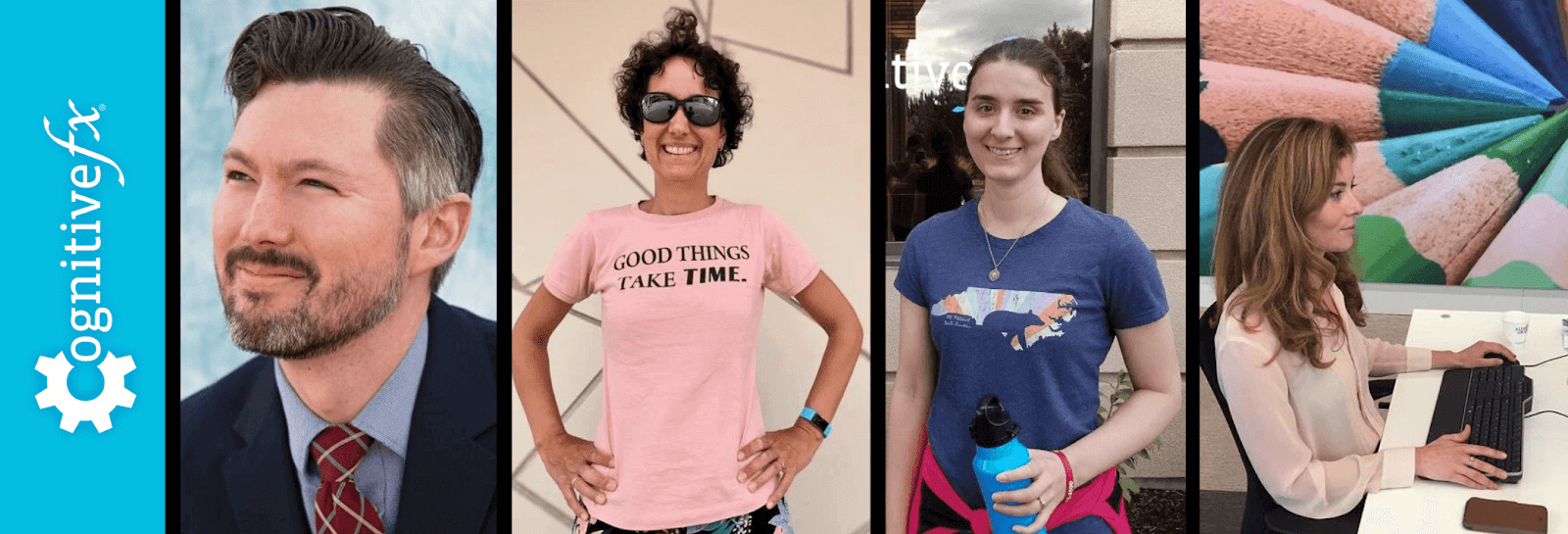

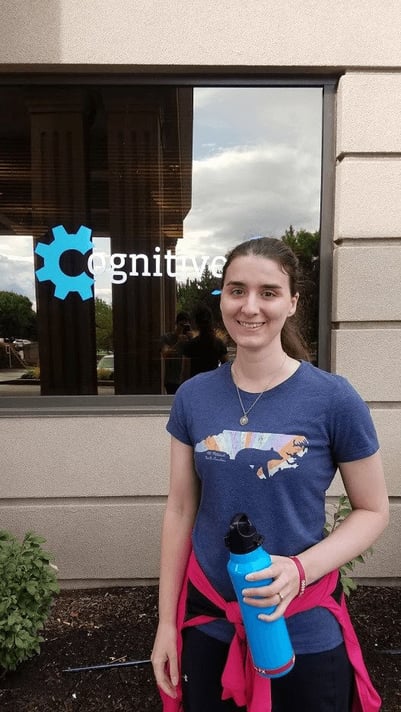
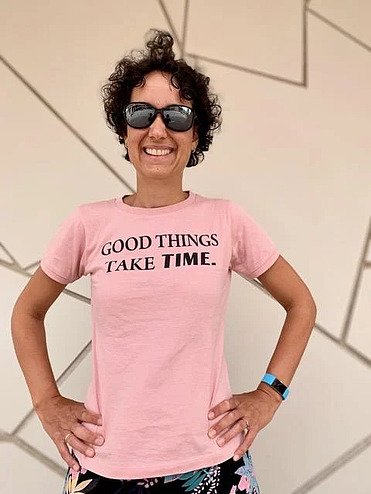
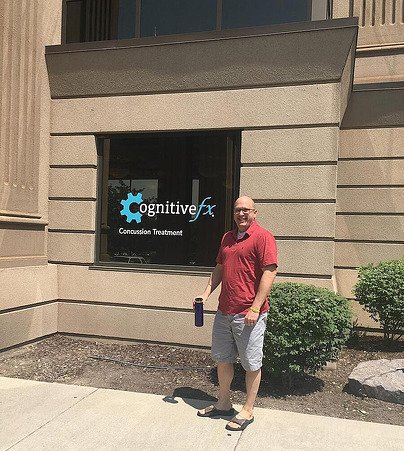

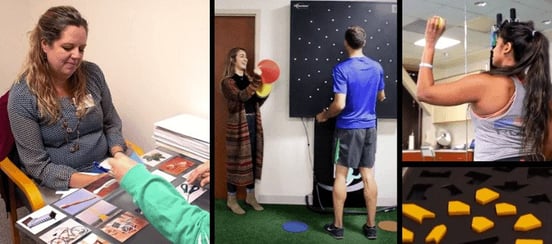

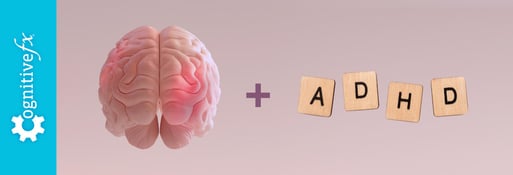

.png?height=175&name=Why%20Post-Concussion%20Syndrome%20Causes%20Tingling%20Hands%20(And%20What%20to%20Do).png)
